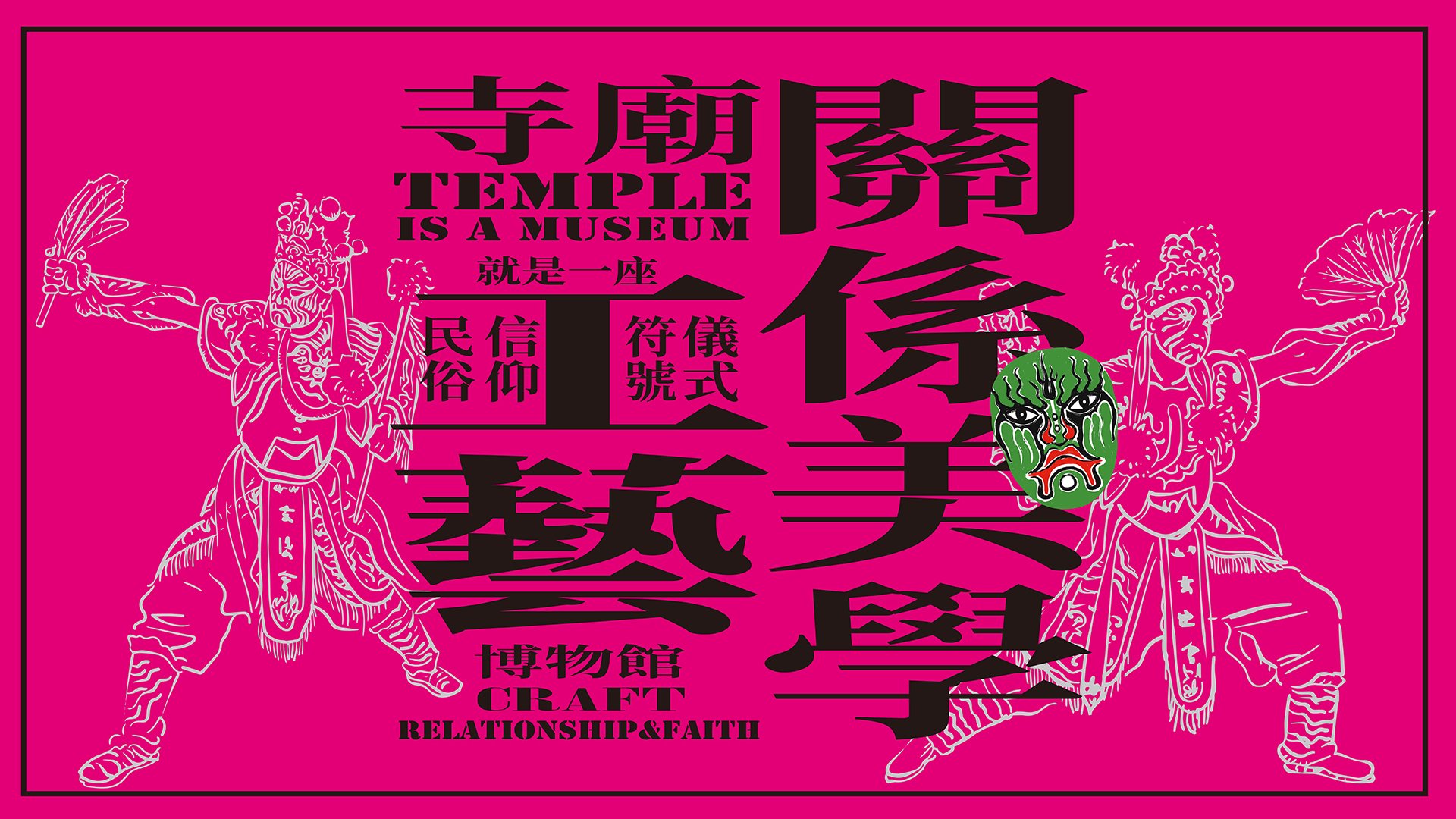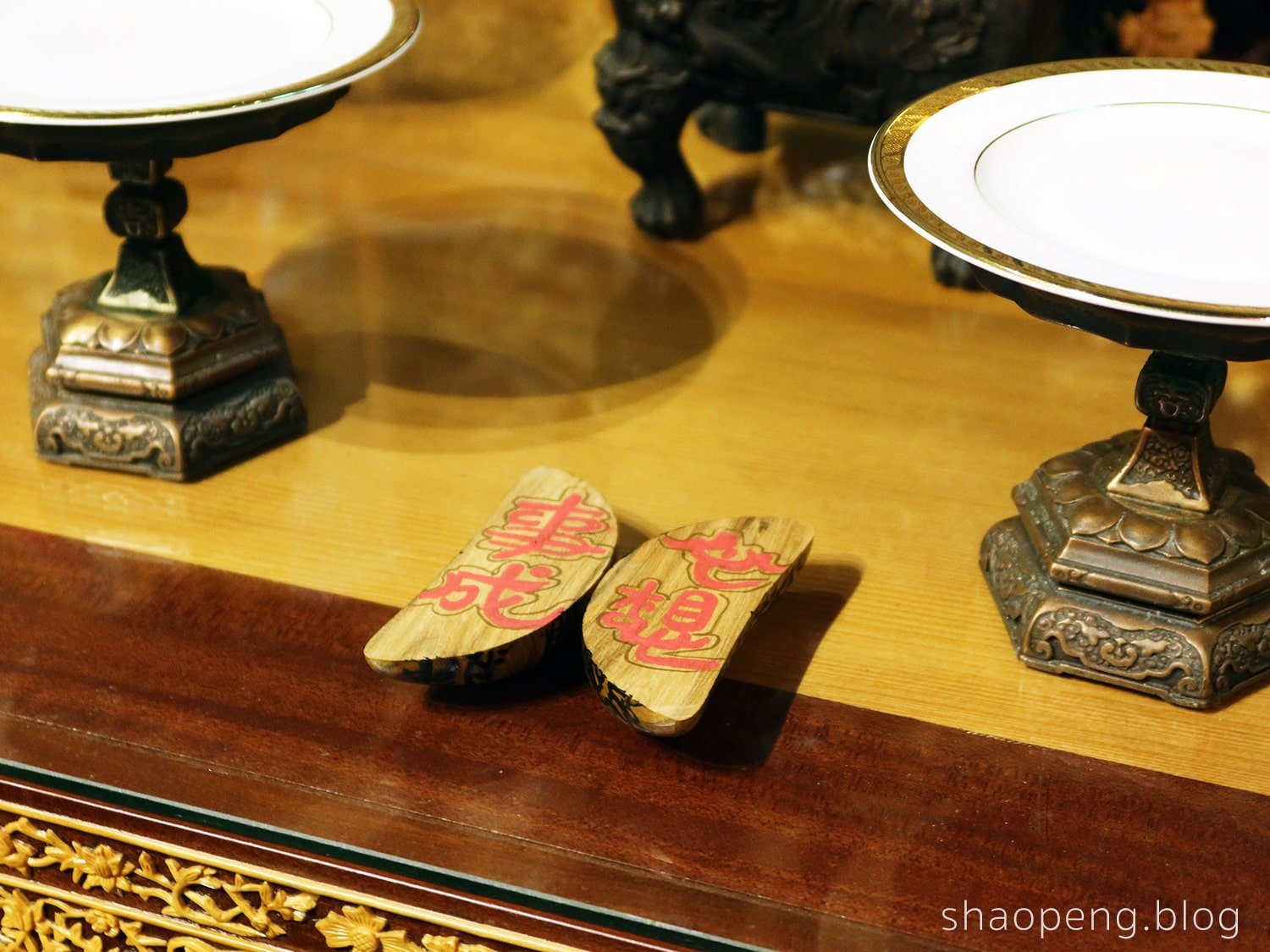When Faith and Culture Collide: Temple is a Museum
A special exhibition titled A Temple is a Museum: Craft, Relationship & Faith highlights the intriguing intersection of faith and culture by drawing a thought-provoking analogy between temples in Taiwan and the museums of the 21st century.
Worth the journey: ★★★☆☆
The exhibition Temple is a Museum: Craft, Relationship & Faith
The side of the staircase leading to the exhibition is adorned with a sketch of a figure from religious troupe unique to Taiwan.
KAOHSIUNG, Taiwan — Temples are an embodiment of people's unwavering devotion to the mysterious and divine forces that govern the universe. Temples are also epicenters of faith that serve as a platform for spiritual practices and gatherings, where members of the community share and exchange information.
In Taiwan, the popular saying "Say a prayer, blessings will follow" (有拜有保佑) is a powerful reminder that every visit to a temple brings the promise of divine blessings and good fortune. This resulted in the nation having a high concentration of temples — almost every neighbourhood in Taiwan has a temple. Recent statistics reveal that there are over 12,000 registered temples in Taiwan, ranging from tiny shrines dedicated to local deities gods to enormous complexes that attract tens of thousands of devotees on a daily basis.
Temples become the spotlight of a special exhibition, A Temple is a Museum: Craft, Relationship & Faith, now on view at the Fo Guang Shan Memorial Museum, highlighting the diverse and complex role of temples as both cultural and spiritual epicenters.
As visitors enter the exhibition, they are soon transported to the bustling square in front of the temple, also known as biō-tiânn (廟埕). This immersive experience — recreated through a combination of graphics, installations and videos — allows one to hear the drum and bell ensemble of Beiguan music, witness puppetry show performed for the divine, and observe locals playing Chinese chess under the shade of the bayan tree. The aroma of puffed rice and the sweet scent of candied haws seem to permeate the air, while the festive ambiance of a parade lingers.
Entering the exhibition is akin to setting foot in the public square outside a temple, where you might catch locals engaged in a game of Chinese chess under the banyan tree.
Pop-up puppetry show, a common sight in the temple complex, can be found inside the exhibition.
In Taiwan, doors are an important feature in safeguarding houses and buildings. Hence, it's common to find depictions of menshen, or door guardians, on the main entrance of temples, as they are believed to keep evil spirits at bay.
The exhibition showcases a pair of doors adorned with imposing door guardians, each hand-painted with intricate details. The two figures have wide-open eyes and furrowed eyebrows that convey an air of authority and power. Pan Li-Shui (潘麗水), the first folk painter to receive the Arts Award from Taiwan’s Ministry of Education, is the artist behind this work of art.
As we proceed, we step into an imagined temple, where a diverse collection of artifacts displays the intricate artistry and craftsmanship evident in every corner of the temple's interior and exterior.
The wooden structure of the temple is infused with auspicious symbolism, with the eaves of the roof often adorned with decorative figurines in the form of heavenly figures made of cochin pottery. These beautiful pieces add to the overall grandeur and magnificence of the temple.
Inside the temple, we can admire the altar installed in the main hall and discern the artistry of divine statues that are brought to life through the traditional art of zhuangfou (粧佛), which literally means “decorating the Buddha”. This time-honoured craft involves combining the techniques of woodcarving and lacquer lining to create elaborate religious sculptures. A stunning example of zhuangfou created by the acclaimed artisan Shih Zhi-Hui (施至輝), who has been recognised as a National Living Treasure.
A Cochin ware depicting Li Nuo-Zha — a character from the 16th-century Chinese novel, Investiture of the Gods — is an example of the decorative pieces that would have adorned the temple.
A pair of crescent-shaped jiaobei, known as “moon blocks”, used for divination is placed on the altar.
A stunning example of an elaborate altar, such as those commonly found in temples throughout Taiwan.
Temples act as hubs where a civilization's beliefs and customs come to life through an array of rituals, festivals, and performances. Rituals, in particular, play a crucial role in temple practices, providing individuals with a means to connect with the divine and reaffirming their commitment to their faith. These rituals are often celebrated during festivals and special occasions, such as the Matsu pilgrimage, which takes place during the third lunar month and attracts millions of worshippers each year.
Within the exhibition, visitors can observe images and videos depicting various rituals, including pilgrim (遶境), religious troupe/parade (官將), and incense-offering (刈香), among others. While colourful parades and captivating performances often characterize these religious events in the eyes of the public, these activities serve as an important unifying force, bringing together members of the community towards a shared purpose.
The exhibition concludes with kanzhou (看桌), a unique art form that plays an integral role in temple rituals in Taiwan. It involves the presentation of offering to the divine, crafted using various techniques such as pinching, sculpting, weaving, and pasting. These exquisite creations bring to life dishes, statues, and objet d’art, serving as a symbol of the community's devotion and cultural heritage.
Before exiting the exhibition, visitors can participate in workshops that are held in a communal area, where they can gain hands-on experience with the various craftsmanship techniques used in temple practices. These sessions provide an opportunity for visitors to deepen their understanding of the traditions that have been passed down for generations.
A video installation lining the wall of the exhibition room showcases the various religious activities oragnised by the temples.
On the table, there is a selection of dishes crafted using various techniques, which are offered to the divine and collectively known as kanzhou.
The exhibition title, Temple is a Museum, is a thought-provoking one that urges the public to see the temple in a different light, especially through the lens of the artistic and craft heritage that has been preserved over generations.
The term "museum" has its roots in the classical Greek word mouseion, which referred to "seat of the Muses." Over time, the definition of museums has evolved from places of philosophical discussions during the Roman times to collections of art during the Italian Renaissance and beyond.
In 2022, the International Council of Museums (ICOM) introduced a new definition that highlights the evolving role of museums in the 21st century:
“A museum is a not-for-profit, permanent institution in the service of society that researches, collects, conserves, interprets and exhibits tangible and intangible heritage. Open to the public, accessible and inclusive, museums foster diversity and sustainability. They operate and communicate ethically, professionally and with the participation of communities, offering varied experiences for education, enjoyment, reflection and knowledge sharing.”
The recent definition of museums as being community-oriented and focused on social engagement reflects the long-standing role that temples in Taiwan have played throughout the last few centuries. As a unifying force, temples have brought together people from all walks of life and fostered a sense of community that museums now strive for.
Although museums focus on collecting, preserving, and interpreting historical artifacts and cultural relics, they often display these objects behind glass cases or store them away in storage where they rarely see the light of day. In contrast, temples serve as forums where objects are established based on the needs of the community, some of which facilitate a dialogue between the devotee and the higher realm. These objects, created out of religious necessity, embody the aesthetics of a cultural collective and the artistry of skilled craftsmen, often anonymous. Through this process, the space of the temple is empowered by the collective faith of its community. That said, temples transcend their status as mere places of worship, serving as vital cultural institutions that keep a civilisation's heritage alive.
This exhibition, curated by the National Taiwan Craft Research and Development Institute, is fittingly displayed at the Fo Fuang Shan Memorial Museum, located next to the renowned Fo Guang Shan Monastery. Initially, I found it somewhat paradoxical that one would visit a museum to view an exhibition that posits how the temple is a museum, rather than actually visiting the temple itself to discover what this “museum" has to offer. However, I soon came to realise that, for many individuals, a temple is merely a place of worship.
Temple is a Museum reminds us that, while many people may visit museums to learn about art and culture, temples have much more to offer. Unlike museums, temples are not limited to city centers but are often hidden in plain sight, just around the corner. So instead of meeting at a museum for your next outing, consider suggesting a visit to a temple with a friend. You might be surprised by the unique experiences it can offer.
The Fo Guang Shan Memorial Museum in the city of Kaohsiung, Taiwan is located at the end of a long pathway.
A Temple is a Museum: Craft, Relationship & Faith is on view at the Fo Guang Shan Memorial Museum in Kaohsiung city, and runs through May 21, 2023.










